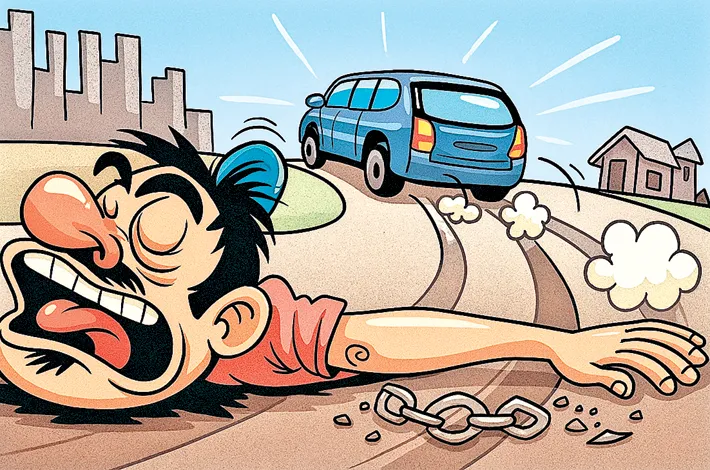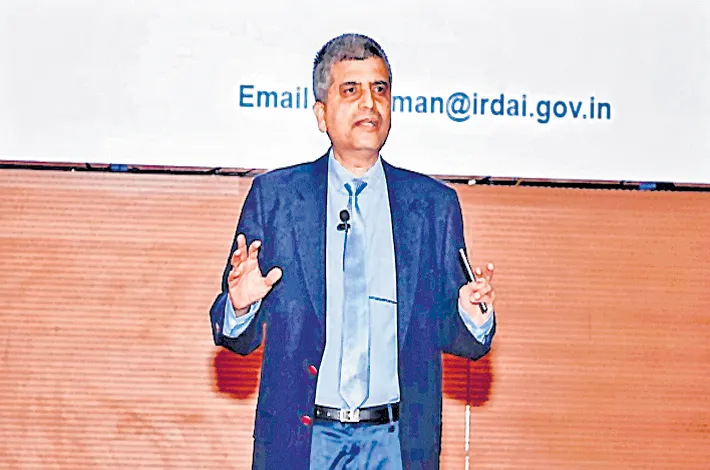Telangana roads turn into death traps: Neglect claim thousands of lives
08-11-2025 12:00:00 AM

metro india news I hyderabad
"Roads are the lifeline of the nation," proclaims the opening line on the official website of Telangana's Roads and Buildings (R&B) Department. Yet, in a bitter irony, these very lifelines have morphed into pathways of death across the state, riddled with potholes, craters, eroded asphalt, and gravel, turning everyday commutes into perilous gambles. While national road conditions draw scrutiny, Telangana's infrastructure stands out for its alarming deterioration, fueling a surge in fatal accidents and claiming lives at an unprecedented rate.
Over the past two years, state roads have been utterly neglected, with repairs scarce or nonexistent. This apathy has escalated risks, leaving commuters in constant fear: those heading out for work wonder if they will return home alive. Engineering experts and locals alike blame poor maintenance for transforming roads into "death traps," where vehicles swerve unpredictably to avoid hazards, often colliding head-on.
A chilling incident this week near Chevella underscored the crisis. A high-speed tipper truck, navigating a narrow, pothole-ravaged stretch, veered erratically and slammed into an RTC bus, killing 19 people in a horrific collision. Eyewitnesses and police reports pinpoint the primary cause: the road's deplorable condition. "If the road had been properly maintained and widened, this tragedy could have been averted," officers and survivors told investigators.
Post-accident debates between residents and public representatives focused on recurring issues—narrow lanes, unfilled potholes, and lack of expansion—forcing drivers to dodge obstacles and crash into oncoming traffic.
While the Chevella crash grabbed headlines due to its scale, similar accidents occur daily across Telangana, often unreported in dozens. Poor road maintenance emerges as the dominant factor in these mishaps, compounded by excessive speed, narrow widths, deep craters, and uneven surfaces. Since Telangana's formation in 2014, road accidents have claimed around 7,000 lives annually on average, with numbers climbing steadily from 2021.
Accidents have spiked from over 20,000 in 2014 to more than 25,000 in 2024, while deaths rose from 6,668 in 2020 to 7,281 last year. Notably, injuries have declined—from around 24,000 in 2016-2017 to 15,401 in 2024—indicating crashes are growing more lethal due to severe impacts on substandard roads. Exploding vehicle numbers, high speeds on pitted surfaces, and evasion maneuvers contribute to this deadly trend.
Vast network, chronic neglect
Telangana boasts approximately 93,000 km of roads under two key departments. The R&B Department oversees 24,245 km, including 3,152 km of state highways, 12,079 km of major district roads, 9,014 km of other district roads, and 2,690 km of national highways (with 868 km managed by the National Highways Authority of India, or NHAI). The Panchayati Raj Department maintains 68,200 km: 3,985 km of cement roads, 25,725 km of bituminous (BT) roads, 7,798 km of water-bound macadam (WBM) metal roads, 12,392 km of gravel roads, and 18,300 km of earthen tracks.
Despite this extensive network, maintenance is abysmal. Potholes proliferate, surfaces uplift, gravel scatters, and edges erode without intervention. Double- and single-lane roads without dividers account for most accidents, though even divided national and state highways see crashes from signal violations, speeding, or careless U-turns. Additional hazards include overgrown bushes and trees obstructing views, absent shoulder gravel leading to edge collapses, and nighttime risks amplified by poor visibility. Drivers dodging potholes frequently collide with oncoming vehicles.
Dual departments share blame
Both R&B and Panchayati Raj departments bear responsibility for the chaos. Officials cite fund shortages as an excuse, but critics call it governmental lethargy—roads have been ignored for two years, enabling tragedies like Chevella. "These potholed paths don't inconvenience VIPs in escorted convoys; they endanger ordinary lives," fumed residents.
Engineering experts urge immediate action: regular monitoring, pothole repairs, road widening, vegetation clearance, and shoulder reinforcements. Citizens demand the state government and departments "open their eyes" to proper upkeep, prioritizing commuter safety. As roads continue claiming lives, the call for accountability grows louder. Without urgent reforms, Telangana's lifelines risk becoming permanent graveyards.








